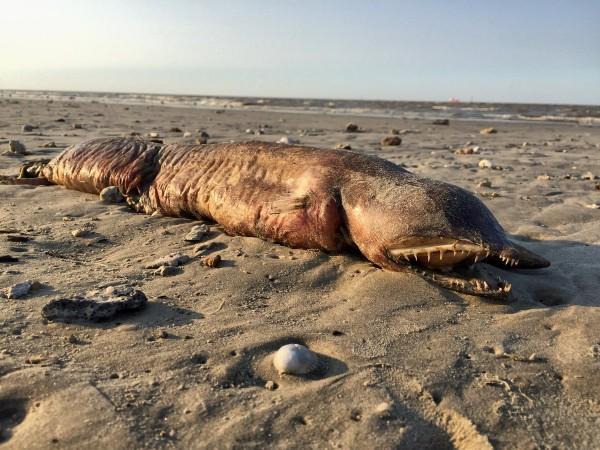
After the floods of Hurricane Harvey, a mysterious sea creature had washed up on the shoreline in southwest Texas. The sea creature with fangs and no face was spotted by Preeti Desai, social media manager at National Audubon Society, who posted the pictures of the creature on Twitter, asking, "What the heck is this??"
Desai along with some conservationists, who were assessing the damage from the storm, had found the mysterious creature on a beach, about 15 miles from Galveston.
Desai told BBC News: "I follow a lot of scientists and researchers. There's such a great community of these folks that are very helpful, especially when it comes to answering questions about the world or identifying animals and plants."
On the other hand, internet gave guesses like: 'A gulper eel', a 'bloated moray eel' and someone even went on call in an 'alien'.
An eel expert, Dr Kenneth Tighe, a biologist with the Smithsonian National Museum of Natural History, told Earth Touch News that the creature could likely be a fangtooth snake-eel or Aplatophis chauliodus.
Okay, biology twitter, what the heck is this?? Found on a beach in Texas City, TX. #wildlifeid pic.twitter.com/9IUuuL65qh
— Preeti Desai? (@preetalina) September 6, 2017
The social media manager reportedly left the dead eel alone there to "let nature take its course."
Tighe also suggested that it could be a Bathyuroconger vicinus or Xenomystax congroides as all the three species have fang-like teeth and are found off the Texas coast. However, as the tip tail of the creature is not visible in the picture, it is difficult to confirm.
Desai wrote in a post on Audubon's website: "I joined Audubon Texas's Coastal Conservation program manager, Victoria Vazquez, and coastal warden, Dennis Jones, to visit some of the rookery islands off the coast of Galveston and assess the damage," Washington Post reported.
"They wanted to take a look at things like how much land had been lost and how much plant cover was missing due to being uprooted or washed away. Changes like these could affect the number of species that will be able to nest on the habitat in the future," she added.

















